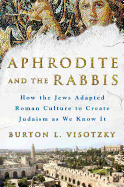
In Aphrodite and the Rabbis, Jewish scholar Burton Visotzky takes readers on a historical tour of the ancient Holy Land, presenting a singular conception of Judaism in the early Common Era. His main argument is that modern Judaism is, in regard to practices and traditions, thoroughly Greco-Roman in nature.
Following Judaism in the years after the destruction of the Second Temple in Jerusalem, Aphrodite and the Rabbis plots out the rise of Rabbinic culture. Before the Jewish revolts in the early CE (which culminated in the Temple's razing), Judaism was directed by priests who performed sacrifices and led worship. With no temple, the religion began to move toward more scholarly pursuits, eventually culminating in the rise of the rabbi, a word that means "teacher."
Visotzky uses ancient Judaic texts, Roman historical writing and even the architecture of early synagogues to show that the rabbis were heavily influenced by the surrounding culture of the Roman Empire. From taking on flourishes of Roman rhetoric to the use of pagan symbols, Jews in the early centuries of the Common Era synthesized their practices with the overall mores of the times, creating a monotheistic religion with a dedication to Socratic thought and Stoic philosophy. Many Jewish communities even prayed in Greek!
While Visotzky can veer into unnecessary colloquialisms (his use of the term "metrosexual" is particularly cringeworthy), his warm and personal style makes Aphrodite and the Rabbis feel like an intimate guided tour of ancient Judaism. For anyone interested in the birth of Judeo-Christian culture, this history is worth a look. --Noah Cruickshank, marketing and development manager, Open Books, Chicago, Ill.

